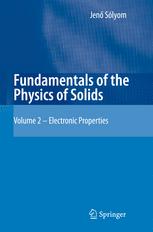

Most ebook files are in PDF format, so you can easily read them using various software such as Foxit Reader or directly on the Google Chrome browser.
Some ebook files are released by publishers in other formats such as .awz, .mobi, .epub, .fb2, etc. You may need to install specific software to read these formats on mobile/PC, such as Calibre.
Please read the tutorial at this link: https://ebookbell.com/faq
We offer FREE conversion to the popular formats you request; however, this may take some time. Therefore, right after payment, please email us, and we will try to provide the service as quickly as possible.
For some exceptional file formats or broken links (if any), please refrain from opening any disputes. Instead, email us first, and we will try to assist within a maximum of 6 hours.
EbookBell Team

0.0
0 reviewsThis book is the second of a single-authored, three-volume series that aims to deliver a comprehensive and self-contained account of the vast field of solid-state physics. It goes far beyond most classic texts in the presentation of the properties of solids and experimentally observed phenomena, along with the basic concepts and theoretical methods used to understand them and the essential features of various experimental techniques.
The first volume deals with the atomic and magnetic structure and dynamics of solids, the second with those electronic properties that can be understood in the one-particle approximation, and the third with the effects due to interactions and correlations between electrons.
This volume is devoted to the electronic properties of metals and semiconductors in the independent-electron approximation. After a brief discussion of the free-electron models by Drude and Sommerfeld, the methods for calculating and measuring the band structure of Bloch electrons moving in the periodic potential of the crystal are presented. The dynamics of electrons in applied electric and magnetic fields is treated in the semiclassical approximation. The effects due to the quantization of the energy levels in strong magnetic field are also discussed. The overview of the transport and optical properties of metals and semiconductors is followed by a phenomenological description of superconductivity. The last chapter deals with the physics of semiconductor devices.
This comprehensive treatment provides ample material for upper-level undergraduate and graduate courses. It will also be a valuable reference for researchers in the field of condensed matter physics.